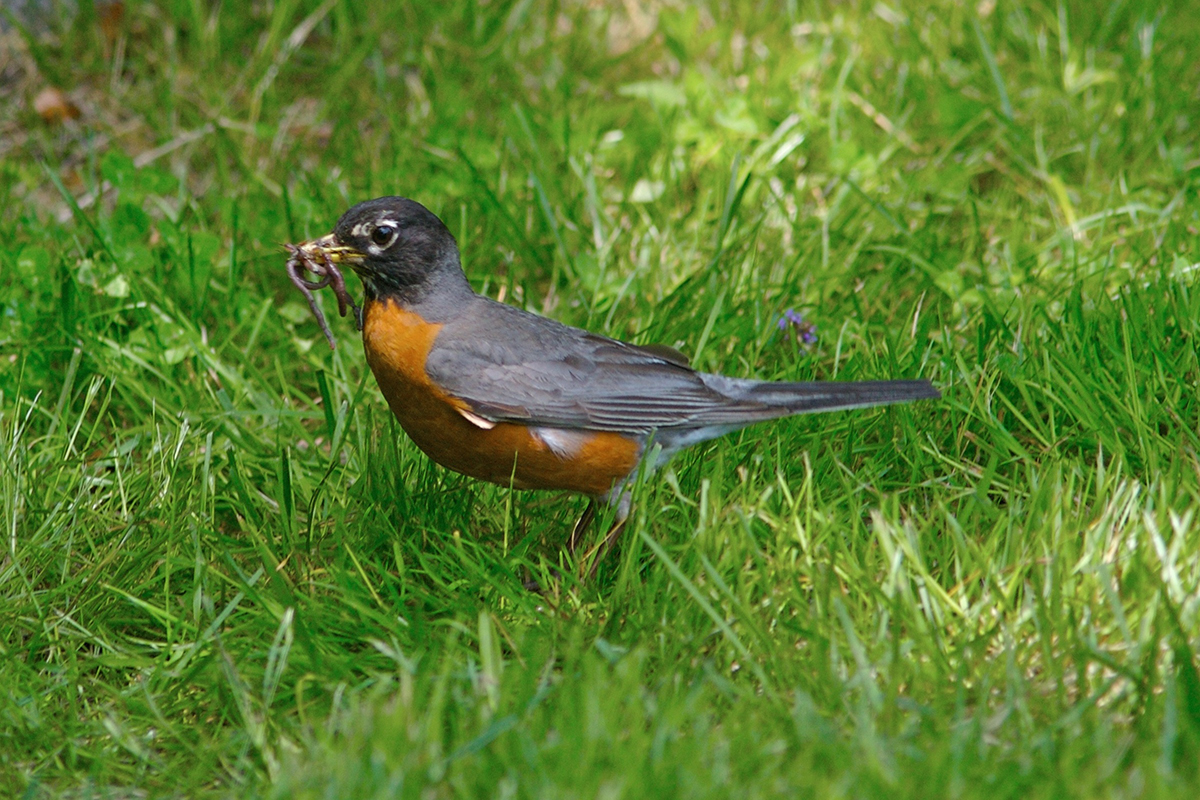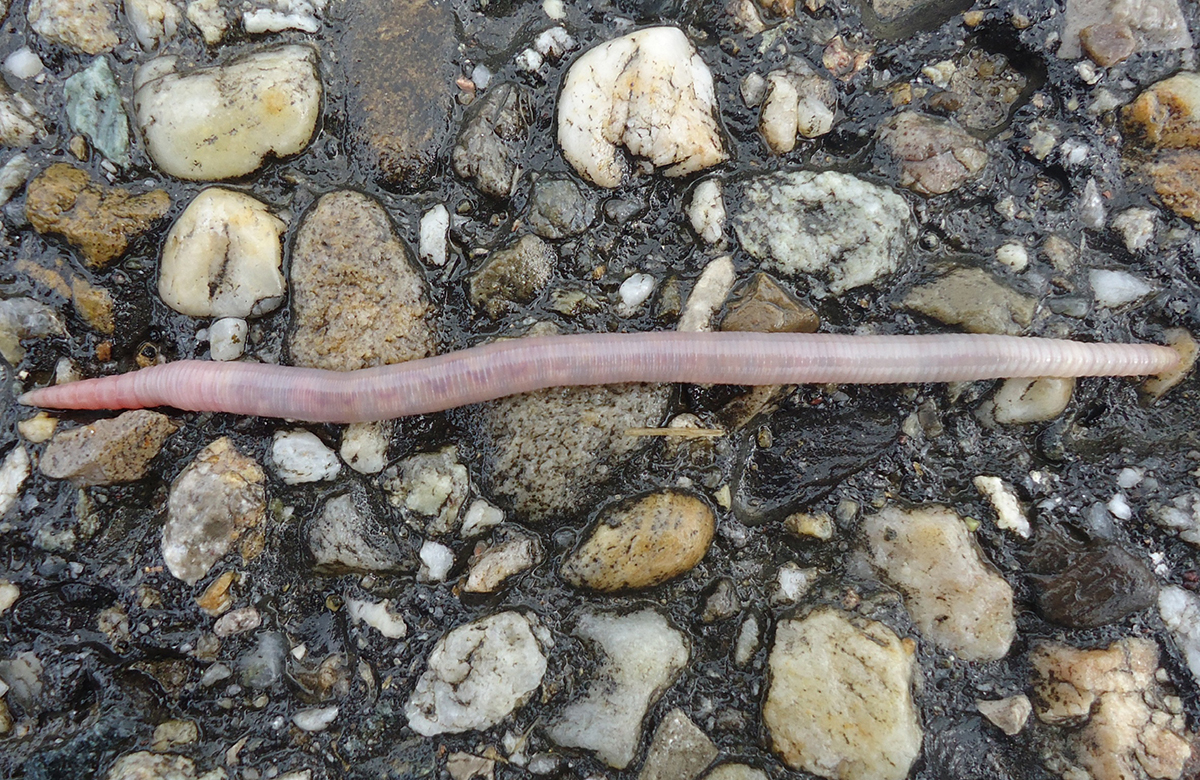| Membership | Price (+HST) |
|---|---|
| Single | $85/year |
| Single Plus | $120/year |
| Family | $130/year |
| Family Plus | $175/year |
| Contributing | $300/year |
| Supporting | $600/year |
| Sustaining | $1,000/year |
| Benefactor's Circle | $2,500/year |
| Director's Circle | $5,000/year |
| President's Circle | $10,000/year |
Invasive Worms of Ontario
By Gabe Camozzi, Education Programs Officer, Royal Botanical Gardens
A tunnelling menace is underfoot, threatening the biodiversity of our forests and the quality of our soil. Though small in size, they can live in densities of up to 2000 individuals per cubic metre of earth. Worst of all, very few people realize they pose a threat at all! This dangerous invader? The lowly earthworm.
Despite the conventional wisdom that paints worms as beneficial — whether aerating the soil, chomping through compost, or being used as bait — none of the 19 species of worms found in Ontario are native to our region. Most were introduced from Asia and Europe over centuries of human settlement activity, transported in the ballast tanks of ships and in agricultural products. They have since spread throughout Ontario and as far north as the Territories.

To understand the negative impact worms have on the environment, we must go back in time to the end of the last ice age, 14 000–11 000 years ago. During this time, the province was covered in glaciers. All the worms native to our region were wiped out during this period.
Once the ice receded, the forests which grew back developed over thousands of years without worms. In a healthy forest here, leaf litter falls to the ground and slowly decomposes, creating a ‘humus’ layer that both retains moisture and provides nutrients for native plants. All native forest trees, shrubs, and understory plants — not to mention the animals who consume those plants — rely on this layer for survival.
Worm behaviour is a direct threat to this self-replenishing system. As worms come to the surface to feed, they drag leaf litter downwards into the soil, bringing the nutrients too deep for plants to access them. As the native plants struggle to access the moisture and nutrients they need, they are surrounded by invasive plants, who thrive without humus. Worms also consume small seeds that usually germinate in the humus layer, leading to a further reduction of native plants in our forests.

Though it is very difficult to remove worms once they have established themselves, there are steps that you can take to reduce the spread of these invaders. Worms do not travel long distances, so the best strategy is to avoid helping them move into new areas. When moving soil or plants, be careful to shake off any worms wanting to hitch a ride. Clean any equipment or clothing before bringing it to new locations. Rather than throwing out unused bait worms, dispose of them in areas with established worm populations (such as your garden). And as always, be mindful of the impact you have when visiting a natural area — your prudence today will make a huge difference for local forest diversity for years to come.
More from the RBG Blog
Check out RBG’s blog for announcements, articles, and more from Canada’s largest botanical garden.
Want to be sure you hear first? Sign up for our weekly e-newsletter to hear about upcoming events, weekend activities, articles, and more!












